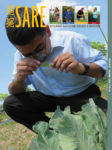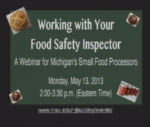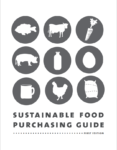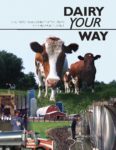Showing 1-5 of 5 results

2015/2016 Report from the Field
Read about SARE-funded work in the areas of sustainable dairy cropping systems, soil health assessments, nutrient management, cover crops, beginning farmers, pollinators, technical assistance programs for women farmers, and more. This edition includes highlights of projects funded through the graduate student program, and the highly regarded Sustainable Agriculture Fellowship, a professional development program coordinated by SARE and NACAA.

Working With Your Food Safety Inspector
How food safety inspectors and small scale processors can work together to meet regulations.

Sustainable Food Purchasing Guide
This guide was written to help institutions determine how to source more sustainable food options.

Dairy Your Way
This publication was created to provide information that will help producers explore the many choices available for today’s dairy farms. This book is not intended to be a how-to dairy guide or manual. While there is no one-size-fits-all answer for dairy farmers seeking success as milk producers, there are many options that can be profitable and satisfying.

12 Aprils Grazing Dairy Program
Tom Trantham's Twelve Aprils grazing program has been part of three Southern Region SARE projects. Tom has influenced scores of experienced and beginning dairy farmers through presentations at conferences and magazine stories. This online manual addresses the most often asked questions about his system.